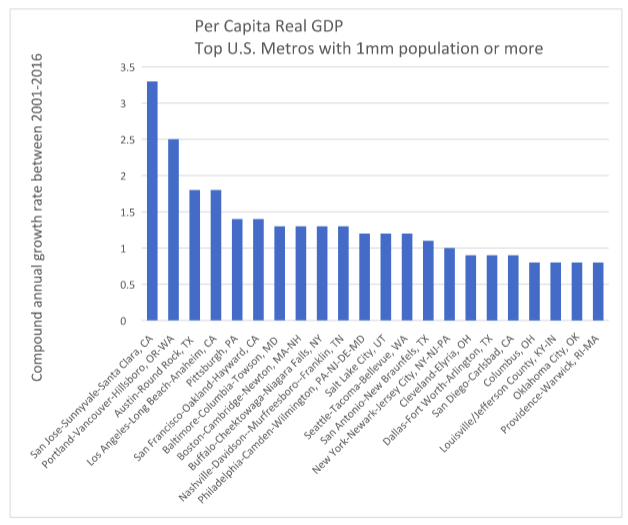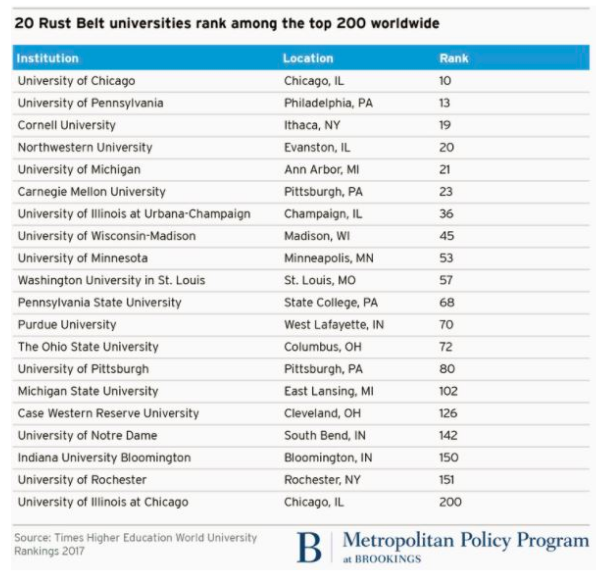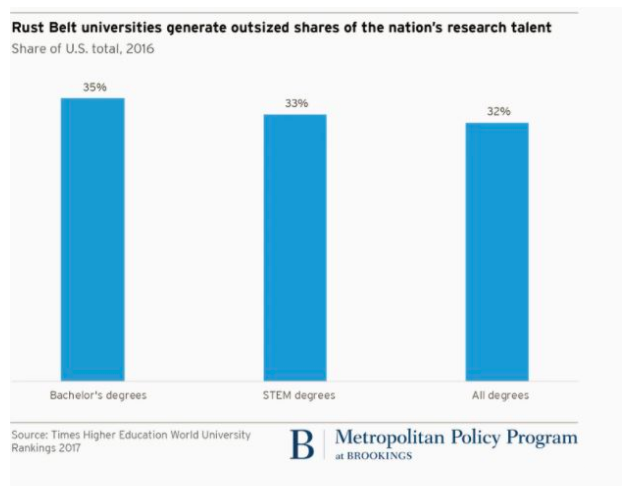
Article contributed by Suraj Pawar, Managing Partner, Point Park Capital LLC (investment management firm specializing in real estate).
At a time when economic activity seems to be thriving in the metropolitan cities of the nation and world, a few manufacturing cities of yesteryear are growing in their own unique way, presenting unique challenges and investment opportunities.
Once-proud industrial cities of America had fallen on tough times at the onset of global competition, as automation and technological changes led to dramatic restructuring of the region’s industries. These changes eliminated countless manufacturing jobs while bankrupting employers in the Rust Belt cities. In so many once-thriving communities, young people fled in search of better opportunities and the residents who remained grew frustrated over diminished job prospects.
More recently, a number of these cities have deployed innovative economic development strategies with local leading universities and partnered with forward-thinking companies to successfully transition themselves to cope with the changing digital industries and shed their one industry dependent model.
Given the contrast between these cities, it’s safe to say that America is driven by two economies. The first economy is the one you read and hear about in headlines across the nation. That one is driven by major cities like New York City, San Francisco, Chicago, Washington DC, Los Angeles, Boston, Seattle.
The second economy is the one that you hear less about, one that’s driving the smaller Rust Belt cities of America. They are once-proud cities whose fortunes were historically tied to those of just a small number of employers or industries.
The First Economy
Factors driving the first economy are not hard to understand. These major metropolitan cities are more productive as they draw better educated workforce with higher wages. They have diverse industries and employers, with more opportunities. It is no surprise that they are growing rapidly.
While manufacturing industries take root in cities both large and small, opportunity in the information era has clustered in dense urban regions where high-tech businesses can tap into rich pools of skilled and creative people.
There are a couple of forces that could stunt the rise of big cities.
- Congestion costs: overpopulation, rise in urban poverty and crime — could turn them into less attractive places for the highly educated young men and women who have been critical to their success.
- Rising real estate prices could also put a brake on their growth.
The Second Economy
Factors driving the second economy, specifically for cities in the Rust Belt region have managed to leverage assets and/or adopt innovative economic development strategies efforts that are succeeding in rebooting local economies for a new era. These places are successfully turning around as shown by Per Capita GDP data provided by U.S.Bureau of Economic Analysis, illustrated below.

Several of the rust belt cities have successfully shed their single-industry reputations and have emerged as “hotspots of global innovation,” due to the convergence of manufacturing traditions and university-based technical expertise. No longer is Minneapolis the Flour City or Pittsburgh the Steel City. Pittsburgh, Cleveland,Columbus, Indianapolis and Minneapolis are today economically diversified and growing economies with growing income and are attracting and keeping well-educated people. In other words, they are “Rusty” no more.

Perhaps the most important of these assets are educational institutions. As per Brookings.edu “the region boasts an impressive network of 20 of the world’s premier research and teaching universities (ranked in the top 200 worldwide), more than in any other U.S. region” and accounts for 35 percent of the nation’s total bachelor’s degree holders, 33 percent of its STEM graduates, and 32 percent of higher education degrees awarded.

“In these communities, a combination of forces—visionary thinkers, local universities, regional government initiatives, start-ups, and big corporations—have created “brainbelts.” Based on trust, a collaborative style of working, and freedom of thinking prevalent in America and Europe, these brainbelts are producing smart products that are transforming industries by integrating IT, sensors, big data, new materials, new discoveries, and automation. From polymers to medical devices, the brainbelts have turned the tide from cheap, outsourced production to making things smart right in our own backyard. The next emerging market may, in fact, be the West.” The Smartest Places on Earth: Why Rustbelts Are the Emerging Hotspots of Global Innovation by Antoine van Agtmael (Author), Fred Bakker
Countless studies and surveys continue to show that these once proud cities are becoming relevant again while adding to the country’s economy. This growth presents unique challenges and investment opportunities that must be further explored.


Leave a Reply